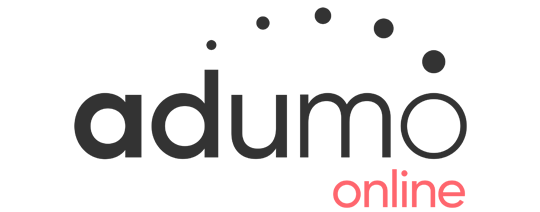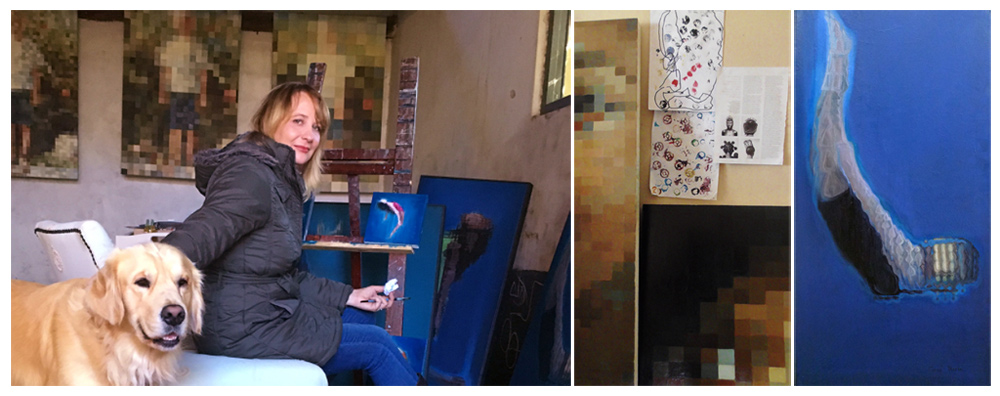
What is your favourite medium, and why?
I’ve tried other mediums, but I always come back to oils, because I feel that I can best express myself in them. I love everything about oil paintings, the smell, the texture, the process and drying time and, of course, the end result.
According to your artist statement you examine our reactions to environments that are foreign to our natural abilities and control. Give me one or two examples of these reactions that you often explore in your work.
Underlying most of my work is the admiration for resilience and fortitude. I admire the ability to overcome obstacles in creative ways.
Water, glass and the abilities/limitations of the human eye informs your work. What is the most interesting aspect of it that excites and inspires you?
My work is mainly concerned with exploring a deeper sight than what we normally observe with our eyes. The use of glass to abstract my figures and portraits enables me to look past the obvious and reduce my input to what I really want to convey.
What else inspires you?
Other themes that inspire my work is transience, migration, and identity. In my pixel portraits I explore the institusionalisation of the individual. 'Till We Have Faces' is a series of abstract portraits of the foster children in the Future of Hope project I am working on. To protect their privacy, foster children's faces may not be published. They remain faceless in the system. I explore the institutionalisation of the individual and therefore the portraits are pixelised. The viewer has to see the painting from a distance to really get the image. It challenges us to physically step back from what we are doing and consider whether we are servants or masters of our own systems. A system can weld things together in a deadly uniformity that destroys individual identity and creativity.
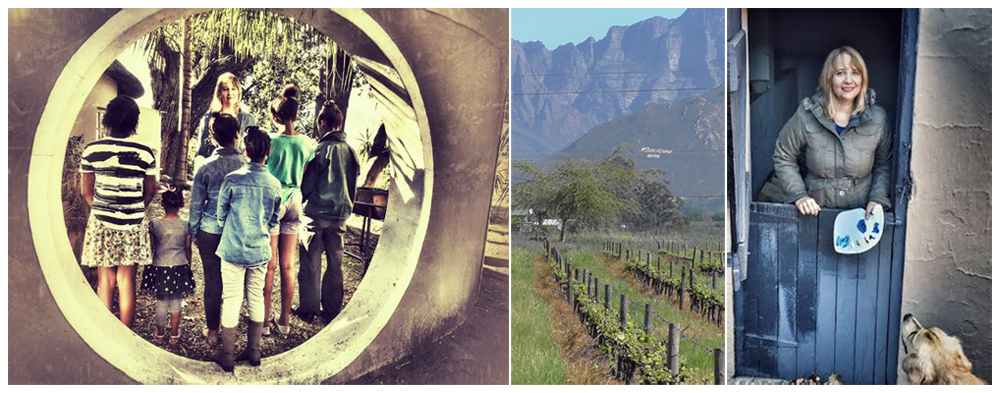
If you have to choose one artist whose work inspires you, who would it be?
Eddy Kamuanga Ilunga.
How important do you perceive the work of contemporary artists to be in our current social and political landscapes?
Visual artists have always been the voice we can see. In our visual and instant age, it is becoming ever more important to communicate clearly and distinctly in a language that can arrest our turbulent attentions. Very few people still take the time to read widely and objectively. It is our role to condense those thoughts passed through the ages into statements that are singular in focus and impact.
Tell me about your studio - is it messy/neat, big/small, dark/light? Where is it located?
I am privileged to stay on a wine farm. My studio is located in an outbuilding and when I step out of the doors, it has the most magnificent view on the Slanghoek Mountains. Depending on the weather, I sometimes move around to paint in other spots, for example one of our stoeps overlooking the vineyards. My studio is usually neat until my three year old son feels like creating his own artworks in there with me. Although it’s sometimes difficult to balance motherhood and making art, his little drawings and marks are always a source of inspiration for me.
Do you have any pre-work ritual that puts you in the right mindset to create art?
Not really, because I’m always ready to paint. I constantly have concepts and inspiration brewing in my mind, so I’m ready as soon as I start working.
Is there a specific reason for using female figures in your work?
Regarding my underwater work, I can usually identify with the figures in some way. Some of them are autobiographical in nature. Regarding my pixel portraits, I am planning on expanding the narrative to male figures as well.
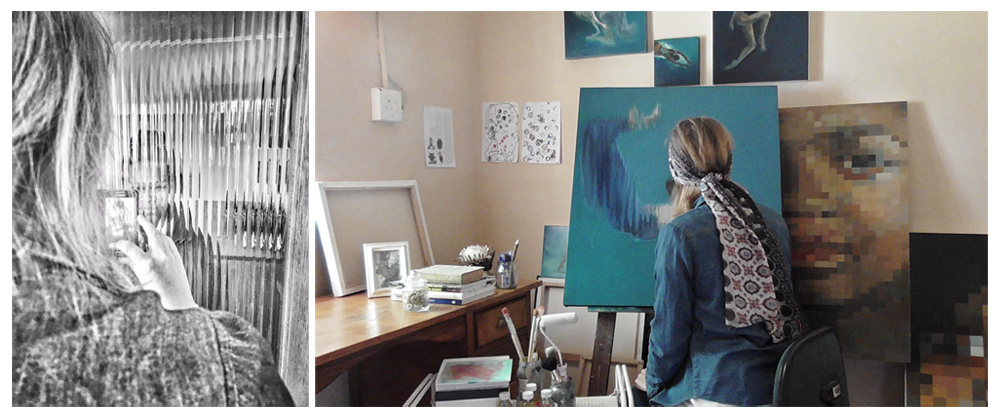
What do you enjoy most about painting?
The moment when I recognise my inner vision on canvas.
How do you know when an artwork is completed?
I like to have time to review my work after I think it is done. Sometimes when it hangs a few weeks, I can review it more objectively to see whether it still needs something. Other times it’s just done and I know it would not need anything more.
What is your favourite colour?
Cerulean Blue.
How symbolic is colour in your work?
In my underwater work I often make use of symbolic colour references. It just fits the themes and helps me to communicate my message.

When is your best time of working and do you work on weekends and public holidays?
I am a morning person and like to bring my work into the house so I can review it early in the morning. Even if I don’t start painting right away, I still feel I can make the best judgments when I have my first cup of tea for the day. Otherwise I work when I can, and often work on Saturdays and holidays. Because I find it difficult to switch off, I keep Sundays open for my family.
What do you do in your free time?
I usually spend it with my son and husband. We enjoy walking the dogs on the farm. I also find it relaxing to watch cooking programs.
What is your favourite food?
Pizza, with sushi as a close second.
What are you reading at the moment?
Great Lives, Great Deeds – a Reader’s Digest compilation of biographies. Next on the list is a re-read of “Till We Have Faces” by C.S. Lewis. It is one of my all time favourites.
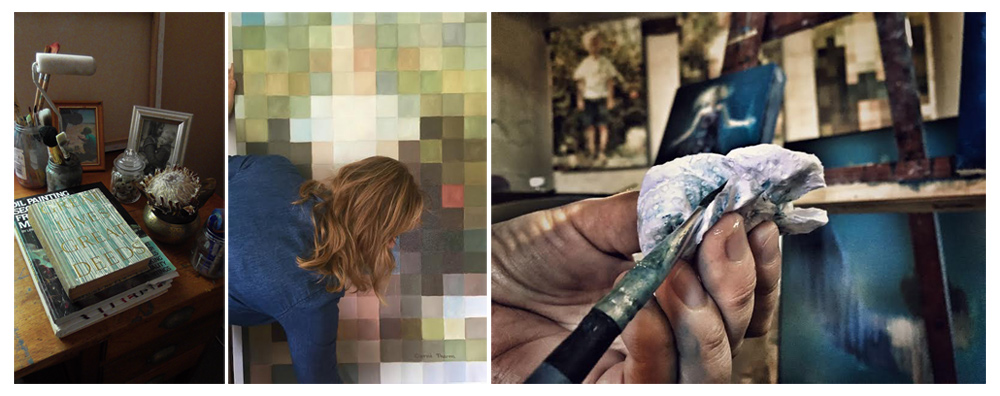
If you couldn't be an artist, what career would you follow?
It would have to be something creative. Maybe event planning.
If you have to choose one single thing - in your studio, bedroom, kitchen or wherever - what object can't you live without?
My husband would say it’s my cellphone. I know it’s terrible, and it’s a cliché, but really, I do everything on my phone. That, and my Cerulean Blue.
What advice do you have for artists who are starting out?
First find your voice and then: work hard. When you’ve done that, work even harder.
Do you have any planned upcoming exhibitions?
Yes. ‘Contrast in Contemporary’, a group exhibition with Hanneke Benade, and Wilhelm Saayman curated by Langeveldt Fine Art. 29 October at Du Toitskloof Wine Estate.

